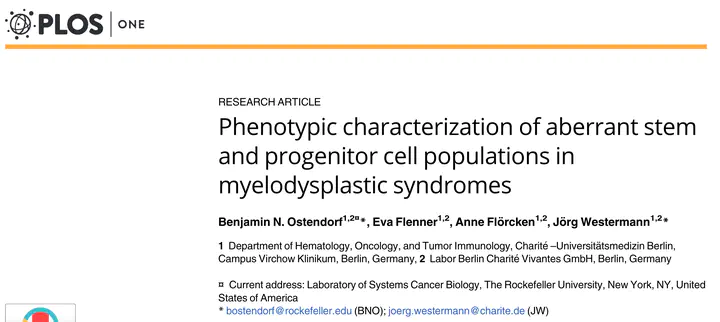Phenotypic Characterization of Aberrant Stem and Progenitor Cell Populations in Myelodysplastic Syndromes

Abstract
Recent reports have revealed myelodysplastic syndromes (MDS) to arise from cancer stem cells phenotypically similar to physiological hematopoietic stem cells. Myelodysplastic hematopoiesis maintains a hierarchical organization, but the proportion of several hematopoietic compartments is skewed and multiple surface markers are aberrantly expressed. These aberrant antigen expression patterns hold diagnostic and therapeutic promise. However, eradication of MDS requires targeting of early myelodysplasia propagating stem cells. This warrants an exact assessment of the differentiation stage at which aberrant expression occurs in transformed hematopoiesis. Here, we report results on the prospective and extensive dissection of the hematopoietic hierarchy in 20 patients with either low-risk MDS or MDS with excess blasts and compare it to hematopoiesis in patients with non-malignancy-associated cytopenia or B cell lymphoma without bone marrow infiltration. We found patients with MDS with excess blasts to exhibit characteristic expansions of specific immature progenitor compartments. We also identified the aberrant expression of several markers including ALDH, CLL-1, CD44, and CD47 to be specific features of hematopoiesis in MDS with excess blasts. We show that amongst these, aberrant CLL-1 expression manifested at the early uncommitted hematopoietic stem cell level, suggesting a potential role as a therapeutic target.